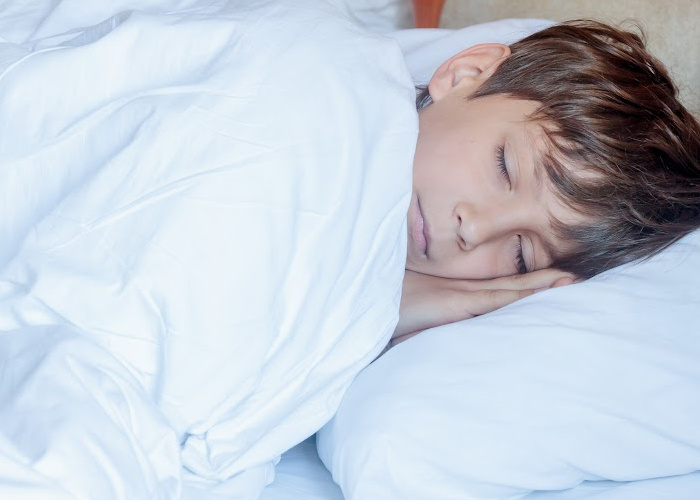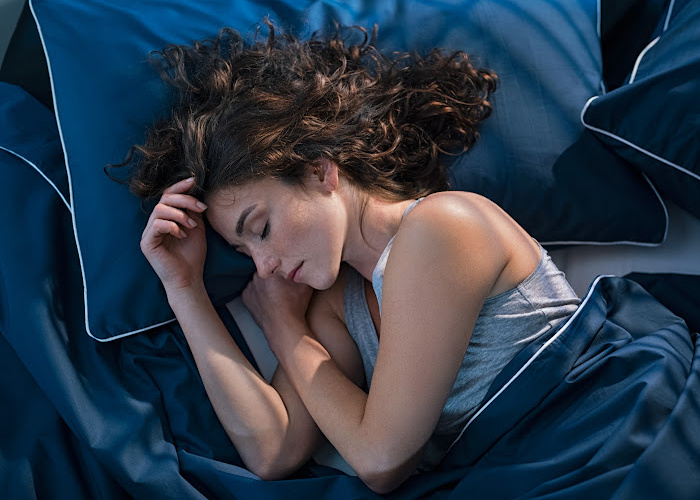It's crucial to know that students with autism and ADHD need special study strategies. Autism…

Exploring the Question: Do Autistic People Dream?
As someone curious about the dream experiences of individuals with autism, you may wonder if they dream at all. The answer is yes, autistic individuals do dream, but their dreaming patterns may differ from those of neurotypical individuals.
Dreams are a reflection of our subconscious minds, and for individuals with autism, this can mean a unique experience. Autistic dreams may involve sensory elements or repetitive behaviours that reflect their everyday experiences.
In this article, we’ll delve into the topic of autism and dreams. We’ll explore whether autistic individuals experience dreams and how their dreaming patterns may differ from neurotypical individuals. We’ll also discuss the importance of recognizing and validating the dream experiences of individuals with autism.
So, let’s investigate the world of autistic dreams and gain a deeper understanding of this fascinating aspect of neurodivergent dreaming.

Understanding Autism and Dreaming
Autism is a complex neurodevelopmental disorder that affects social interaction, communication skills, and behaviour. According to recent studies, autism also has an impact on dream experiences. The dream experiences of individuals with autism have been the subject of much research in recent years, helping to shed light on the unique ways in which autistic individuals experience and interpret their dreams.
Dreams and autism research has revealed that the dream experiences of autistic individuals can differ significantly from those of neurotypical individuals. This is due, in part, to the fact that autism affects the way in which the brain processes information, including sensory input. As a result, autistic individuals may experience dreaming in a manner that is distinct from that of neurotypical individuals.
One concept that has emerged from this research is the idea of neurodivergent dreaming. Neurodivergent dreaming refers to the dream experiences of individuals with neurological differences, such as autism, ADHD, and dyslexia. Neurodivergent dreaming is an area of study that is gaining increasing attention, as it provides insights into the unique ways in which individuals with these conditions experience their dreams.

Exploring Dreaming Patterns in Autism
When it comes to dreaming patterns in autism, there is evidence to suggest that autistic individuals experience some unique characteristics during dreaming. For example, studies have found that individuals with autism have a higher frequency of nightmares and night terrors compared to their neurotypical peers.
Moreover, some research suggests that autistic individuals may have more vivid and intense dreams, possibly due to increased sensory sensitivity. This could manifest in the form of highly immersive dreamscapes or a heightened emotional response to dream content.
Other studies have explored the link between autistic dreaming behaviour and repetitive behaviours observed during waking hours. For instance, research has noted a correlation between repetitive movements during dreams and repetitive behaviours exhibited by autistic individuals during the day.
While it’s still unclear what causes these specific dreaming patterns in autism, studying them provides valuable insights into the cognitive and sensory experiences of individuals with autism. Understanding these patterns could also inform the development of effective interventions and treatments for sleep-related issues experienced by autistic individuals.

Research Findings on Autistic Dreaming
Research into the dreams of individuals with autism has shed light on the unique ways in which they experience the dreaming state. Several studies have explored the relationship between autism and dreaming, highlighting the potential insights gained from analyzing the dream experiences of autistic individuals.
| Study Name | Methodology | Key Findings |
|---|---|---|
| The Dreaming Brain in Autism: A Functional MRI Study | Functional MRI analysis of brain activity during REM sleep in individuals with autism compared to neurotypical individuals | Autistic individuals exhibited decreased activation in several brain regions associated with dreaming, suggesting potential differences in the neural mechanisms underlying dreaming in autism |
| Dream Content in Individuals with High-Functioning Autism Spectrum Disorder | Self-reported dream content analysis of individuals with autism and neurotypical individuals | Autistic individuals reported more dreams involving animals and less social interaction, indicating potential differences in dream content related to social cognition and sensory processing |
| Phenomenology of Dreaming in Individuals with Autism Spectrum Disorder | Interview-based analysis of dream experiences in individuals with autism | Autistic individuals reported more vivid and sensory-based dreams, with a focus on visual and tactile elements, indicating potential differences in dream intensity and sensory processing |
These findings suggest that there may be distinct dreaming patterns and behaviors among autistic individuals. Further research is needed to fully understand the implications of these differences and their potential significance for autism research.
By gaining insights into the dream experiences of individuals with autism, researchers may be able to gain a deeper understanding of the condition itself and its impact on cognitive and sensory processing. These findings may also have broader implications for the study of dreaming and the workings of the brain.
Overall, research into the dreams of autistic individuals provides a fascinating glimpse into the complexities of the human mind and the potential insights that can be gained from studying neurodivergent dreaming.

Personal Accounts and Perspectives
If you’re an individual with autism, you may have experienced different dream patterns compared to neurotypical individuals. Some autistic individuals have reported vivid and intense dreams with detailed sensory experiences, while others have described dreamscapes that are abstract or highly symbolic.
One autistic person shared that their dreams often consist of intricate mathematical equations and patterns. Another individual described their dreams as a series of interconnected fragments or snapshots that are difficult to make sense of.
For some autistic individuals, dreams can be overwhelming and anxiety-inducing, especially if they involve vivid sensory experiences. One person shared that they often wake up feeling disoriented and exhausted after a particularly intense dream.
Despite the variability in dream experiences among individuals with autism, one recurring theme seems to be the emotional intensity of dreams. Several people have described dreams that evoke strong emotions, ranging from fear and anxiety to joy and excitement.
It’s important to note that not all autistic individuals experience dreams in the same way. However, by sharing these personal accounts and perspectives, we hope to highlight the diversity of dream experiences within the autism community and promote greater understanding and empathy towards the unique ways in which autistic individuals dream.

Conclusion
After exploring the topic of autism and dreams, it is clear that there is much to learn about the dream experiences of autistic individuals. While existing research has begun to shed light on the unique patterns and behaviors exhibited during dreaming, there is still much to be discovered.
It is crucial to recognize the significance of validating the dream experiences of autistic individuals. Dreams can serve as a window into the inner thoughts and emotions of individuals and can help inform our understanding of autism. By giving credence to the dreams of autistic individuals, we can better understand their experiences and work towards creating a more inclusive and empathetic society.
Moving forward, further research is needed to fully understand the relationship between autism and dreams. By continuing to explore this topic, we can gain a more comprehensive understanding of autism and its impact on various aspects of life, including dreaming.
Frequently Asked Questions
Do autistic people dream?
Yes, autistic people do dream. Dreams are a normal part of sleep for individuals with autism, just as they are for neurotypical individuals.
How do dreams of autistic individuals differ from neurotypical individuals?
The dreaming patterns of autistic individuals may differ in terms of content, frequency, and intensity. Research suggests that some autistic individuals may experience more vivid or intense dreams, while others may have recurring themes or patterns in their dreams.
Is there any research on the dream experiences of individuals with autism?
Yes, there have been studies conducted on the relationship between autism and dreams. These studies aim to understand the unique dream experiences of autistic individuals and explore any patterns or insights that may arise from such research.
How does autism influence dreaming patterns?
Autism may influence dreaming patterns in various ways. Some individuals with autism may have specific behaviors or characteristics exhibited during dreaming, which can provide insights into how autism impacts dream content and experiences.
What are some notable research findings on autistic dreaming?
Research on autistic dreaming has revealed interesting findings. Some studies have shown that autistic individuals may have more vivid visual imagery or sensory experiences in their dreams. Other research has explored the relationship between certain autistic traits and dream content.
Are there personal accounts of autistic individuals regarding their dream experiences?
Yes, many autistic individuals have shared their personal accounts and perspectives on their dream experiences. These personal stories provide valuable insights into the diversity and uniqueness of dream experiences within the autistic community.



This Post Has 0 Comments